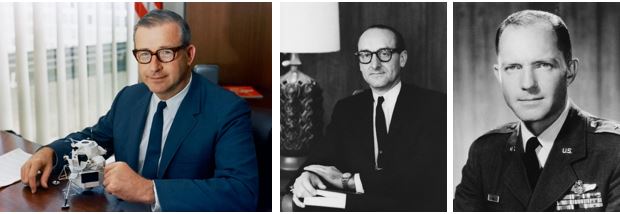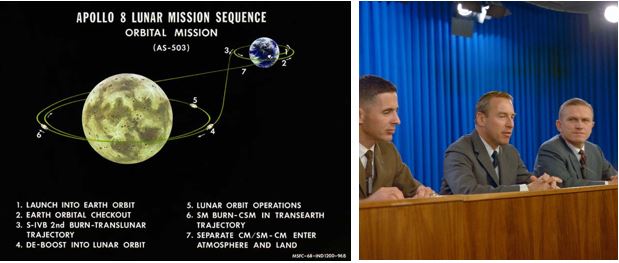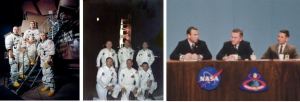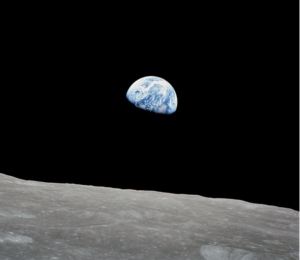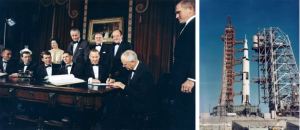“The National Aeronautics and Space Administration today announced that the Apollo 8 mission would be prepared for an orbital flight around the Moon.” That statement by NASA Headquarters on November 12, 1968, ended weeks of intense internal Agency deliberations and public speculation about Apollo 8’s targeted mission. Beginning in early August of that year, senior NASA managers had been contemplating whether it would be possible to send Apollo 8 on a circumlunar mission or even have it enter orbit around the Moon. The original mission for Apollo 8 was to conduct the first crewed test of the Lunar Module (LM) in Earth orbit, but NASA announced on August 19 that it was deleting the LM from the flight due to delays in getting it ready for a December flight. Instead of delaying Apollo 8, Apollo Program Director Samuel C. Phillips said NASA was looking at other options of advancing the program to meet President John F. Kennedy’s goal of landing a man on the Moon before the end of the decade.
Acting Administrator Thomas O. Paine chaired a review attended by senior NASA managers the day before the announcement. The decision was made following a detailed analysis of the recently completed Apollo 7 mission, certification of changes made to the Saturn V following the Pogo problems encountered during Apollo 6, completion of flight computer programs for deep space and lunar missions, and rehearsal through computer simulations of the Mission Control ground systems. George E. Mueller, Associate Administrator for Manned Space Flight, stated the lunar orbit option would significantly advance the Apollo Program by providing NASA with valuable experience in navigation and communications at lunar distances. Dr. Paine summarized, “We have concluded that we are ready to fly this advanced mission around the Moon.”
Recent Soviet space activities may have provided additional pressure to the decision. These include Zond 5 making the first unpiloted circumlunar flight in September 1968, the return of Soviet cosmonauts to space with Georgi T. Beregovoy’s Soyuz 3 space flight and rendezvous with the uncrewed Soyuz 2 in October, and Zond 6 then about to loop around the Moon on another unpiloted circumlunar flight.
The flight plan for Apollo 8, the first crewed circumlunar expedition, called for an open-ended mission using commit points to advance to each successive goal. Launch was planned for December 21, 1968, from Kennedy Space Center’s Launch Complex 39A. The Saturn V rocket would place the Apollo 8 spacecraft still attached to its third stage into Earth orbit. After two or three revolutions, the third stage would re-ignite to perform the Trans-Lunar Injection maneuver to send Apollo 8 toward the Moon, after which the spacecraft would separate from the spent stage for the three-day coast to the Moon. The Apollo Service Propulsion System (SPS) would ignite to slow the spacecraft to enter an elliptical orbit around the Moon. Two lunar revolutions later, the orbit would be circularized. After 10 orbits around the Moon, the SPS would reignite to speed them on their way back to Earth. Just prior to reentry, the Command Module would separate from the Service Module and enter the Earth’s atmosphere at a record 24,000 miles per hour. Three main parachutes would ensure a safe splashdown in the Pacific Ocean, ending the history-making six-day mission.
The crew assigned to the Apollo 8 mission, Commander Frank Borman, Command Module Pilot James A. Lovell, and Lunar Module Pilot William A. Anders, held a news conference in the auditorium at the Manned Spacecraft Center, now the Johnson Space Center in Houston, on November 16. They spent an hour describing their upcoming mission and answered questions from news reporters.

























